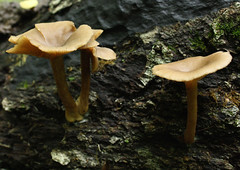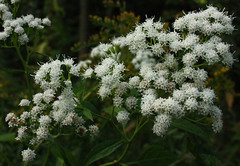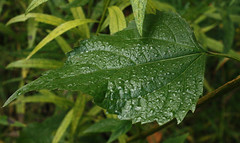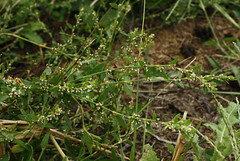To the list of things that patriotic Americans were expected deny themselves for the sake of the war effort — from meat and wheat to their own money, should a Liberty Bond drive be underway — the U.S. fuel administration now sought to add Sunday driving. Late in August 1918, the administration issued a request that all use of motor vehicles be suspended every Sunday for the indefinite future, with the goal of conserving gasoline so as to forestall shortages as the war effort pressed on. The request allowed some exceptions, such as doctors' and other emergency vehicles, farming tractors, trucks hauling freight, and vehicles "on errands of necessity in rural communities, where transportation by steam or electricity is not available."
The request was an appeal, not an order; but, as the
Gazette noted, if the citizenry failed to respond to the appeal, it might quickly become an order, with federal penalties attached.
The first "gasless Sunday" was September 1. The
Gazette reported on it with a tone of nostalgia for the quiet Sundays of the horse-drawn era. "If one could divert his mind back twenty or more years ago, he would appreciate the autoless day in Hobart last Sunday…. Few cars were out and still fewer on pleasure trips." Aside from a few defiant motorists, the degree of compliance had been impressive. Even the farmers had not availed themselves of the loophole for "errands of necessity in rural communities" — they had dragged the buggy out of the barn, hitched the horses to it, and driven to church the old-fashioned way.
The Lake County fuel administrator now passed along word that the federal request had been modified specifically to allow farmers to drive to church in their automobiles ("but they will not be permitted to use them for pleasure"). Still, the next Sunday saw most farmers behind horses, not motors. The newspapers coming out that week gave a possible reason why: they didn't want to be the targets of patriotic vigilantes, whose mildest response to the sight of a motorist was to yell out "Slacker!"
The
News told of a party of motorists bound for Pittsburgh who stopped over in Valparaiso on Saturday night; when they asked local garage men whether it would be safe for them to continue traveling the next day, the men advised them not to because of "the treatment accorded travelers at South Bend, Elkhart and other points east on the previous Sunday."
I did a little checking of on-line newspapers to try to find out exactly what that "treatment" was, without success, but I came across an illustrative story out of Berne, a small Indiana town not far south of Fort Wayne. There a group of young men, having appointed themselves enforcers of the gasless Sunday, got the bright idea to tie strings laden with tin cans across the street to catch violators. When a "caught" motorist stopped his car to free it from the strings and cans, the young men would gather around to jeer and insult the "slacker." It was great fun for a while, but as the hour for evening services approached and people started driving to church, the town's marshal told the young men to knock it off. They responded by calling
him a slacker. (The next day, a fight broke out when a man commenting on the incident again referred to the marshal as a slacker — and was overheard by the marshal's son, standing nearby; he broke the man's nose.)
In Logansport, Indiana, Sunday drivers were hailed with cries of "Slacker!" and "Pro-German!" Their licenses plate numbers were reported to local newspapers, probably in the hope that the drivers would be still more publicly shamed.
Anyway, the Pittsburgh-bound motorists in Valpo cautiously stayed over until Monday; and even Lake County Sheriff Lewis Barnes, whenever he drove out that day, thought it wise to put a placard on his car: "Sheriff's car. On official business." Reports came in from unspecified towns near Valparaiso that after nightfall, mysterious artists had painted yellow stripes on any cars found on the street.
By the following Sunday, that practice spread to Valparaiso itself, and a week later, the infection had reached Hobart. As John Berndt, Henry Fasel, Theodore Rossow and Albert Wolkenhauer sat among the congregation at Trinity Lutheran Church, their cars were attacked by patriots bearing paintbrushes and cans of yellow paint. David Frank's car got striped with yellow as he worshiped in the M.E. Church, and so did the car of a Miss Hopper who had driven to the Hobart Drug Co.
The
Gazette commented on the story:
We believe that every one of those farmers who used their cars last Sunday evening to go to church did so in the best of faith in their right to do so. The incident is unfortunate and regrettable, but is what might be expected when people look differently at the [gasless Sunday] request order. The best way is to refrain from the use of cars on Sunday, as "things may go from bad to worse."
No arrests were made.
Sources:
♦ "All Cars Found on Streets of Valpo Painted Yellow Sunday." Hobart News 19 Sept. 1918.
♦ "Cars Painted Yellow." Hobart Gazette 4 Oct. 1918.
♦ "Few Autos on Street Sunday." Hobart Gazette 6 Sept. 1918.
♦ "Few Heedless of Gasless Sunday Plan." Logansport Daily Tribune 10 Sept. 1918.
♦ "Gasless Sunday Is Again Strictly Observed Hereabouts." Hobart News 12 Sept. 1918.
♦ "Local Drifts." Hobart Gazette 13 Sept. 1918.
♦ "Request of Fuel Administrator Observed Generally Over Area." Hobart News 5 Sept. 1918.
♦ "Sunday Autoing Prohibited." Hobart Gazette 30 Aug. 1918.
♦ "U.S. Appeals to Patriotism to Conserve Gasoline." Hobart News 29 Aug. 1918.
♦ Untitled. Fort Wayne Journal-Gazette. 10 Sept. 1918.
♦ "Yesterday Was a Real Gasless Sunday Here." Logansport Pharos-Reporter 9 Sept. 1918.



















































